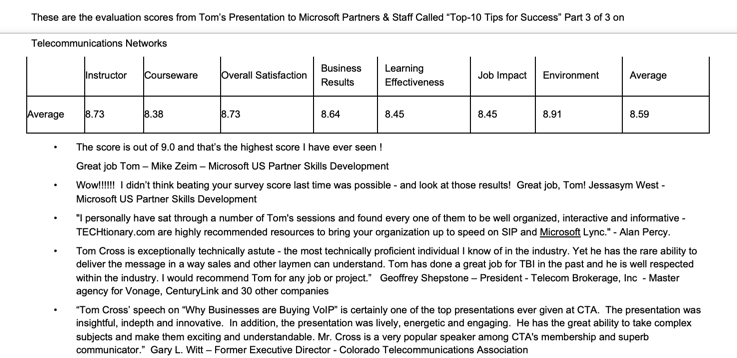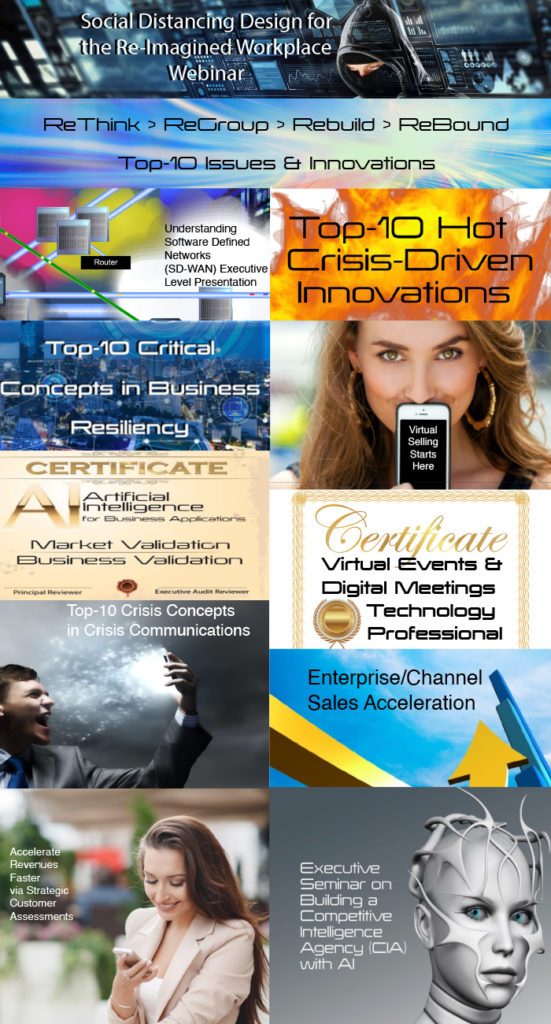Virtual Events Professional Certification
Overview and Background
Business has been and always will be about being faster, cheap, better. To accomplish that strategically, the faster you can communicate, the faster you can change, and those corporations that change the fastest will be the most successful. Yet organizations struggle because to increase the speed you need to increase the speed of the people who work there. The world is moving faster and faster as what I call “organizational velocity” (OV). OV is the speed by which information travels throughout the organization. We all know where information is but how it is used and how fast it is used is critical to making decisions faster. Decision making is more than a yes-no but often a carefully orchestrated process that looks at what needs to be done and through the lifespan until the decision changes. The concept of the mythical man month effectively describes that if you are an organization of one, you can make decisions instantly, but you can only do the work of one. When you add more and more people, decisions take almost infinitely longer as more and more people are involved but you can do more like sending a person to space. To accelerate the communications process means getting people “on the same” page faster.
The process of collaboration in today’s environment requires the “buy-in” from more and more people. However, as each day delays any decision the value or ROI-return on investment declines faster and faster. In other words, the longer the delay the lower the return. Giving that people involved in many decisions are not just sitting around waiting for what you need but working on their own work. Indeed, we need better collaboration, but we also need not just faster but better improvements in the collaboration process. If you consider that meeting participants may need time to research, complete a task, visit a customer, work with others you can see that the more complex the decision the more indepth the development to determine validity or potential outcome. In those situations, in which factual information is being exchanged in order to solve a problem, studies show that only about half of the person’s time is actually spent communicating—sending or receiving information. Searching for information, taking notes, and other organizing efforts took up the rest of the time. If the meeting situation is one of negotiation or conflict requiring an exchange of opinions and argumentation, the person spends as much as 75% of his or her time actually communicating with verifying each step of a document or process along the way. Nonetheless, other non-communicating activities, such as information retrieval and document reading, still make up 25% of the person’s time. In addition, another overlooked challenge did meeting attendees really understand what the presenter/speaker was trying to convey. That is, did they all agree on what was said, was what was heard? The goal of the course is not just to overlay technology to a fundamental problem of poor communication but to integrate enhanced technology with better business communications processes.
Summary – Virtual Events Professional (VEP) is providing faster, cheaper and effective ways for improved business communications. Enhanced meeting technology options are complex and getting more so as there are fewer and fewer people in one place with more and more people in customer, technical labs, research centers, working at home, co-working, mobile, onsite each using often very different technology. VEP can bring technology with business processes and operations that accelerates decisions faster with more involvement and allows for more thoughtful analysis.
Exhibit A – Virtual Events Professional Course Elements
A meeting, event, trade show is comprised of some or all of the following components:
• Determination of the purpose of the meeting
• Project announcement and scheduling
• Social discussion, dialog, attention retention and interaction
• Research and presentation preparation
• Exchange and analysis of information
• Meeting report and analysis
• Ratification of the report and distribution of results or actions
Virtual Events Professional (VEP) Manager Course Available
The following course is available for webinar delivery. This is for meeting and travel planners, technology developers, presentation creators and speaker/presenters.
Session 1 – Introduction to Digital Technology Meetings
An introduction to various types of enhanced meeting technology will be discussed such as:
- Video – real-time, still-frame, broadcast, streaming
- Audio – multi-person conference, broadcast, podcast, streaming
- Graphic – whiteboards, graphics and other webinar style presentations
- Augmented – emerging technologies
Session 2 – Implementation of Digital Technology Events Within Events
The following topics will be discussed with the concept of using enhanced meeting technology. Note this session will apply traditional delivery methods with enhanced meeting technology.
- Agenda Planning – review of more than 20 types of meetings
- Audience Interaction – 20 tips for enhanced interaction
- Speaker Planning and Delivery – 50 tips for presenting, preparing, venue, room, starting, during, finishing
- Personal Speaker Tips – 20 tips for speaker warmup and delivery
Session 3 – Using Enhanced Virtual Technology for Specific Meeting Types:
In this session, there will be a discussion of what meeting technology enhances what type of meeting such as:
- Sharing information by audience type
- Sports Events
- Religious Sermons
- Solving conflicts
- Providing status
- Presenting reports
- Convincing
- Negotiation
- Information seeking
- Giving information to get “one the same page”
- Problem solving
- Discussion of ideas
- Delegation of work
- Policy decision making
- Presentations strategic, reports, updates
- Training
- Product review, inspection, evaluation
- Crisis condition
- Conflict resolution
- Disciplinary interview
Session 4 – Case Studies
In this session, various kinds of business meetings using enhanced technology will be presented.
Session 5 – Q&A
Course End
Delivery methods – one-three or six-hour webinar. Scheduling is extremely limited due to previously scheduled seminars. If you have topic or scheduling questions, you can call 303-594-1694 or email cross@gocross.com
Scheduling and Terms – Tuition and webinar fees are prepaid prior to confirmation of delivery date. Payment methods include credit cards, PayPal, ACH/wire. Due to the breadth and depth of this seminar, all topics may not be discussed due to student questions and class interaction. Course topics or terms may change without notice.
Disclaimer
If you have any questions regarding specific content presented or want specific topics or issues addressed, please email or call.
The author and presenter have used their best efforts in preparing this seminar and the programs contained in it. These efforts include the development, research, and testing the theories and programs to determine their effectiveness.

The author and presenter make no warranty of any kind, expressed or implied, with regard to these programs or the documentation contained in this seminar. The author and presenter shall not be liable in any event for incidental or consequential damages in connection with, or arising out of, the furnishing, performance, or use of these programs. This is subject to change without notice.
This program is part of a comprehensive business technology management program. Here are just some of the courses:

